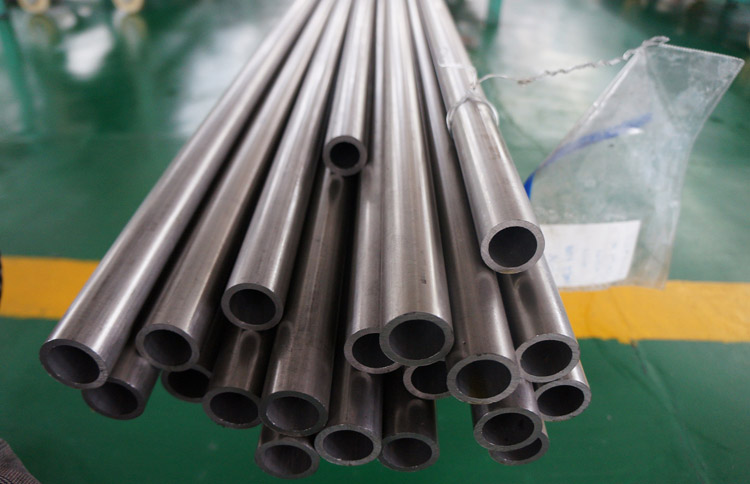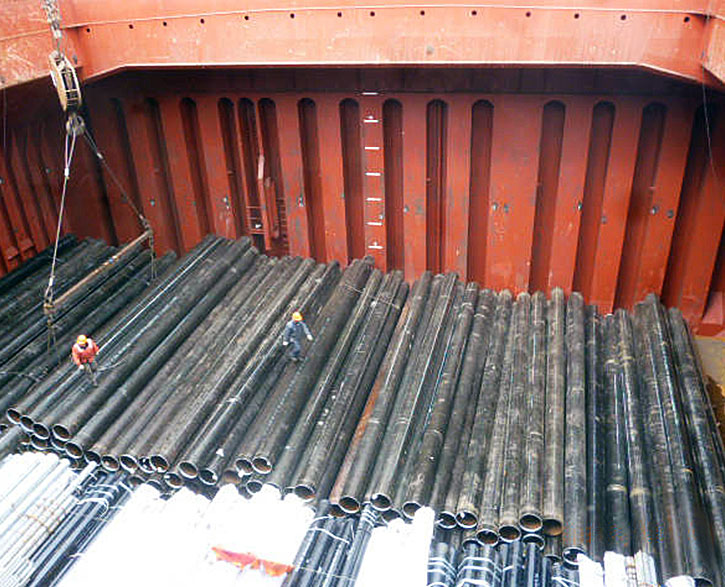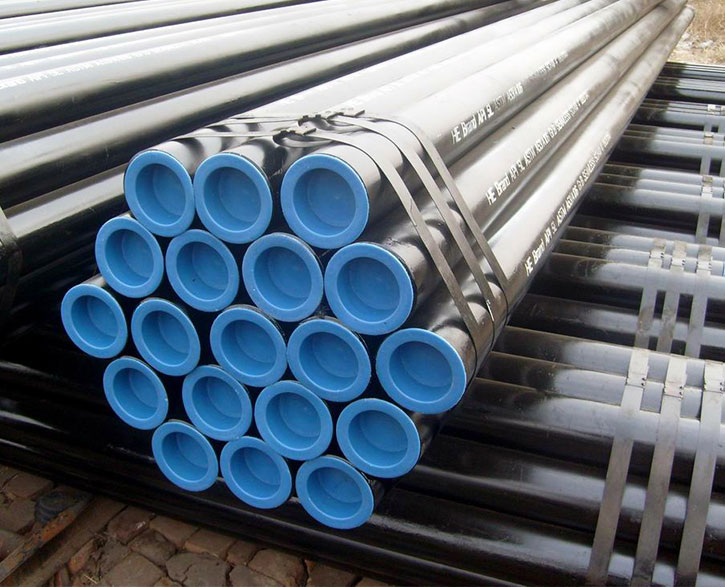Cold-Drawn seamless pipe specifications and grades

The method for making cold-drawn seamless pipes involves taking a round “billet” or bar of steel and boring it in the center, turning it, cutting it, heating it to make it more pliable, then pulling it to make it a longer and thinner tube. As the tube cools, cold working begins. Cold working involves pulling the tube over a stationary die and a mandrel. This increases the pipe’s hardness and improves its surface condition and grain structure while reducing the pipe to the desired size and thickness. ASTM set standards for cold-drawn seamless pipe specifications to ensure that pipes used globally in power generation, heavy equipment, boilers, mining, agriculture, aircraft and aerospace industry meet uniform and standard specifications.
Specifications are set based upon the application of the piping. They’ll generally follow ASTM or American Society of Mechanical Engineers (ASME) specifications. Individual specifications are listed under the standards of A106 for high-temperature applications, A179 for heat ex-changers and condensers and A192 for steel boiler and super-heater tubes. In applications such as these, wall thicknesses are set at anywhere from 1/8 inch to 8 inches, depending upon the application.
- ASTM A209 Through A213
Other standard specifications include the categories of A209 seamless carbon-molybdenum alloy-steel boiler and super-heater tubes; A210 seamless medium-carbon steel boiler and super-heater tubes and A213 seamless ferritic and austenitic steel boiler, super-heater and heat-exchanger tubes. Piping wall thicknesses range from 1/2 inch to 5 inches. A213 grades also have the letter H or M assigned, which changes the composition and specifications for that series.
This category covers A333 seamless and welded carbon and alloy steel pipe for use at low temperatures; A334 seamless and welded carbon and alloy steel pipe, also for use at low temperatures; A335 seamless ferritic alloy-steel pipe for high-temperature service; A424 sheet steel in coils and cut lengths for porcelain enameling; and A519 double-wall, copper-brazed steel tubing suitable for general engineering uses. Wall thicknesses vary with application. Low-temperature applications have nominal or average wall thicknesses, according to ASTM International.





